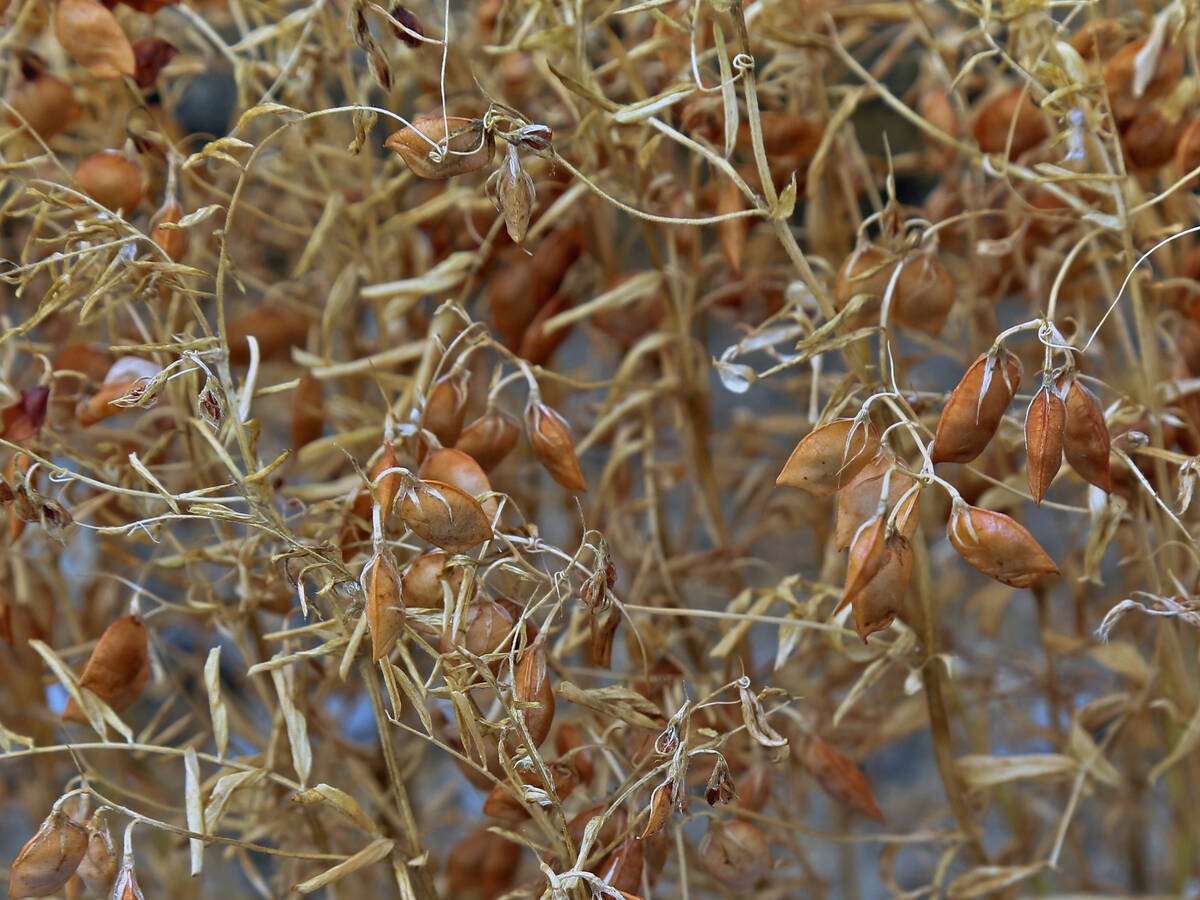Over-supply lowers price
The fed cattle market went into a tailspin because of large offerings and sporadic packer demand, said Canfax.
Average prices were $5 per hundredweight lower on steers and $7 lower on heifers, with the most pressure noted at the end of the week, said Canfax.
Packers extended their already long inventory and some retreated from the market. Some packers already have almost half of the month purchased already.
Steer carcass weights are more than 40 pounds heavier than the same week in 2003. Placing more mature cattle on feed helps explain the increase.
Read Also

Traders forecast record lentil yields for Canada
lentil yields could be phenomenal and that is dragging down prices for both reds and greens.
After not selling aggressively for a couple weeks, producers seemed more than willing to sell even into a falling market last week, Canfax said.
Reported volumes were more than 18,500, up four percent from the week before, a large run considering it was a holiday week.
Alberta prices May 27 in light trade were steers $67.25-$69.25 per cwt., flat rail $115-$115.50 and heifers $67.25.
Canadian cut-out prices two weeks ago suffered from excess supplies of trim, however last week, cutouts were expected to rebound given a stronger U.S. market. The U.S. cutout gained $2 US on Choice and $2.75 on Select.
Strong seasonal beef demand has held cut-out levels 18-20 percent higher than a year ago.
The Montreal wholesale price is steady at $151-$153 per cwt. and the Calgary market is $147-$150.
Steers, feeders dip
Alberta auction market volumes were down 51 percent as producers chose to hold off selling due to the uncertainty in the export market.
Average prices on feeder steers and heifers were under pressure.
Steers 300-500 lb. were $1.25-$2.75 lower, 500-700 lb. fell $3.50-$4 and 700-900 lb. and heavier were $5.25 lower.
Feeder heifers 300-400 lb. traded $2.25 lower, 400-600 lb. fell $7.75, and 600-700 lb. were $4.75 lower. Heifers 700-800 lb. were down $2.75, while 800-900 lb. and heavier traded $4-$4.50 lower.
D1, 2 cows fell $5.50.
Buyer depth has been lost in the cow market because of changes regarding slaughter of cattle older than 30 months in the same plant as those slaughtering cattle younger than 30 months.
By week’s end some optimism was returning. Volumes should be larger, but prices should be steady to stronger because of demand for cattle going to grass as well as continued optimism that the border will open soon, said Canfax.
Expect wide quality ranges in feeder cattle depending on where they have been since last fall.
Cow prices will continue under pressure until a decision is made regarding the 30 month age rule.
Stock bred cows traded between $300-$600 on poor quality and $600-$1,000 on good quality. Bred heifers in northern Alberta were $375-$750 on light trade. Cow-calf pairs, depending on the quality of cow and age of calf, traded at $500-$1,200.
Hog prices drop
Hog prices dropped sharply when U.S. packing plants reduced bids due to abundant supplies and lower wholesale pork prices. Many pork plants closed for Memorial Day and required fewer hogs.
The wholesale pork cut-out value fell by more than $6 US cwt. last week, said Manitoba Agriculture.
The Iowa-Minnesota daily direct hog price (plant mean, 51-52 percent, lean carcass converted to live weight) decreased about six percent to $56.71 US per cwt. on May 27. Lean hog futures prices increased despite the lower cash hog and pork prices. Higher live cattle futures prices led to gains in hogs. Traders might also believe that the demand for pork and pork prices will improve in the coming months.
Slaughter numbers in Manitoba appeared back to normal after more than five weeks of lower than usual marketings, said Manitoba Agriculture.
Slaughter was down for several reasons including lack of market-ready hogs, the threat of strike by Maple Leaf workers in Burlington, Ont., and snowstorms. Olymel Red Deer has reduced its slaughter because of tight supplies.
Canadian pork exports to all destinations as of March 31 were down slightly on the year, according to Statistics Canada. In the first three months, Canada exported 230.35 million kilograms of pork, down from 235.7 million at the same point a year ago. Exports to the U.S. dropped to 102.44 million kg from 109.30 million last year.
Exports to Japan were more than a million kg above the year ago level, at 53.993 million. The increase was due in part to a Canadian advertising campaign and pressures on the domestic Japanese industry.
Lamb sales steady
Ontario Stockyards reported 1,792 sheep and lambs and 169 goats traded last week.
Light lambs sold at barely steady prices, while heavy types held firm. Sheep traded barely steady according to quality. Goats were stronger on good fed types, all others held steady.














